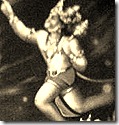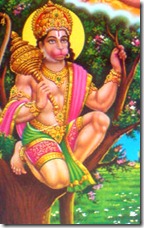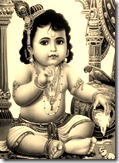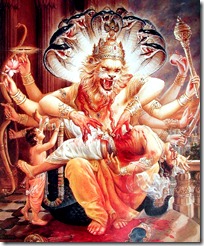Search This Blog
Monday, March 26, 2012
Learning best when you rest: Sleeping after processing new info most effective, new study shows
Nodding off in class may not be such a bad idea after all. New research from the University of Notre Dame shows that going to sleep shortly after learning new material is most beneficial for recall.
Titled "Memory for Semantically Related and Unrelated Declarative Information: The Benefit of Sleep, the Cost of Wake," the study was published March 22 in PLOS One.
Notre Dame Psychologist Jessica Payne and colleagues studied 207 students who habitually slept for at least six hours per night. Participants were randomly assigned to study declarative, semantically related or unrelated word pairs at 9:00 a.m. or 9:00 p.m., and returned for testing 30 minutes, 12 hours or 24 hours later. Declarative memory refers to the ability to consciously remember facts and events, and can be broken down into episodic memory (memory for events) and semantic memory (memory for facts about the world). People routinely use both types of memory every day – recalling where we parked today or learning how a colleague prefers to be addressed.
At the 12-hour retest, memory overall was superior following a night of sleep compared to a day of wakefulness. However, this performance difference was a result of a pronounced deterioration in memory for unrelated word pairs; there was no sleep-wake difference for related word pairs. At the 24-hour retest, with all subjects having received both a full night of sleep and a full day of wakefulness, subjects' memories were superior when sleep occurred shortly after learning, rather than following a full day of wakefulness.
"Our study confirms that sleeping directly after learning something new is beneficial for memory. What's novel about this study is that we tried to shine light on sleep's influence on both types of declarative memory by studying semantically unrelated and related word pairs," Payne says.
"Since we found that sleeping soon after learning benefited both types of memory, this means that it would be a good thing to rehearse any information you need to remember just prior to going to bed. In some sense, you may be 'telling' the sleeping brain what to consolidate."
Provided by University of Notre Dame
"Learning best when you rest: Sleeping after processing new info most effective, new study shows." March 23rd, 2012.http://medicalxpress.com/news/2012-03-rest-info-effective.html
Posted by
Robert Karl Stonjek
Robert Karl Stonjek
Key to good health? A proper diet for the brain
(Medical Xpress) -- When a psychiatrist sets out to write a diet book, he doesn’t have a slimmer waistline in mind. Drew Ramsey, assistant clinical professor of psychiatry and coauthor of The Happiness Diet (Rodale, 2011), believes good health and happiness are achieved when the brain is consistently fed all the nutrients it needs for optimal cognitive and emotional functioning.
The modern American diet—or MAD, as Ramsey calls it—fails to nourish the brain. Heavily processed foods loaded with sugar and toxins have given rise not only to America’s obesity epidemic, but also an epidemic of depression, which Ramsey contends is even more dangerous. Studies show that obese people’s brains actually age faster than those of people at a normal weight, and excess weight has been linked to dementia.
“The Happiness Diet focuses on nutrition from the brain’s perspective with a primary goal of improved brain health,” said Ramsey, 37. “While weight loss happens on this diet, the main goal is brain growth.”
Ramsey and his coauthor, Tyler Graham, a journalist who specializes in health and fitness, based their diet on nutrients they deemed the “essential elements of happiness.” They include vitamin B12, used in the production of brain cells, as well as magnesium, vitamin D and omega-3 fatty acids, said to improve memory, counter seasonal depression and promote strong neurons. Even cholesterol, which forms a crucial protective layer around the brain, gets a nod.
Ramsey, a practicing psychiatrist on the Upper West Side, always asks his patients what they eat. He believes this is the closest thing to primary prevention in psychiatry. When people eat too few calories, they can be depressed and irritable, so when patients are willing, he helps them overhaul their diet.
“Just eating kale and salmon won’t give you bliss, but by promoting stable, positive moods, better focus and concentration, and improved energy, people will engage in their lives in ways that promote feeling their best,” Ramsey said.
Today, an average person on MAD eats three pounds of sugar every week. In order to make the switch to the Happiness Diet of organic and whole foods, Ramsey said “carbage” and “bad mood foods”—primarily sugar-laden foods, industrial fats and factory-farmed meat—must be cut. He also urges readers to steer clear of artificially flavored foods and foods labeled “low fat” and “fat free.” When fats are extracted from foods, they’re usually replaced with refined sugars, which are less satisfying and have no nutritional value. “Basically, don’t eat stuff out of a package,” he said.
Ramsey devotes a portion of his book to the origins of MAD and the advances in industry that brought processed foods to the mainstream. Though the Happiness Diet is not a diet in the traditional sense, the book does include a number of diet recommendations.
“The good news is that the Happiness Diet is made of foods you already like,” he said. It’s a plant-based diet, though meat is an important component. He says it’s important to eat a wide variety of organic vegetables because conventional vegetables, depending on how they were farmed, are diminished in vital nutrients. A diet of whole foods naturally contains less fat and sodium.
Ramsey is a former vegetarian who grew up on an organic farm in southern Indiana. “I had problems with energy and focus until I started eating fish. Vegetarianism doesn’t make sense when you look at nutrition, but I agree with vegetarians in that we need to reform our eating,” he said.
Ramsey recommends eating wild seafood at least twice a week, and said red meat should always be organic and grass fed. Cows fed a grain-based diet are more susceptible to illness and are then treated with antibiotics, which we in turn eat. “Factory-raised meat and dairy are the top dietary source of toxins,” he said. For this reason, he also recommends eating organic eggs and drinking organic whole milk.
In The Happiness Diet, Ramsey ranks the top foods for boosting energy (mesclun, coffee, chocolate, walnuts, red beans, and blue- and red-skinned potatoes), mood (wild salmon, shrimp, cherry tomatoes, watermelon, chili peppers, beets and garlic), and focus (eggs, grass-fed beef, organic whole milk, Brussels sprouts, grapefruit, lemon, berries and anchovies). The book also includes shopping lists and enough recipes for several weeks on the Happiness Diet, as well as money- saving tips like buying meat straight from the farm and joining a community-share agriculture group to have direct access to fresh, seasonal vegetables.
“People always say eating organic is expensive, but if you consider what a MAD eater will need to spend on health care down the road, it’s really not at all,” said Ramsey. “And why wouldn’t you want to invest in your brain?”
Provided by Columbia University
"Key to good health? A proper diet for the brain." March 23rd, 2012. http://medicalxpress.com/news/2012-03-key-good-health-proper-diet.html
Posted by
Robert Karl Stonjek
Robert Karl Stonjek
Home alone -- depression highest for those living alone
The number of people living on their own has doubled, over the last three decades, to one in three in the UK and US. New research published in BioMed Central's open access journal BMC Public Health shows that the risk of depression, measured by people taking antidepressants, is almost 80% higher for those living alone compared to people living in any kind of social or family group.
For women a third of this risk was attributable to sociodemographic factors, such as lack of education and low income. For men the biggest contributing factors included poor job climate, lack of support at the work place or in their private lives, and heavy drinking.
It is known that living alone can increase the risk of mental health problems for the elderly, and for single parents, but little is known about the effects of isolation on working-age people. Researchers in Finland followed 3500 working-aged men and women for seven years and compared their living arrangements with psychosocial, sociodemographic, and health risk factors, including smoking, heavy drinking and low physical activity, to antidepressant use. Information on antidepressant medication was taken from the National Prescription Register.
Dr Laura Pulkki-Råback, who conducted the research at the Finnish Institute of Occupational Health, explained, "Our study shows that people living alone have an increased risk of developing depression. Overall there was no difference in the increased risk of depression by living alone for either men or women. Poor housing conditions (especially for women) and a lack of social support (particularly for men) were the main contributory factors to this increased risk."
She continued, "This kind of study usually underestimates risk because the people who are at the most risk tend to be the people who are least likely to complete the follow up. We also were not able to judge how common untreated depression was."
While this study clearly identifies some of the factors which increase the risk of depression for people who live alone, over half the increase in risk is still unexplained. The researchers suggest that this may be due to feelings of alienation from society, lack of trust, or difficulties arising from critical life events. All these factors need to be addressed in order to begin understanding and reducing the incidence of depression amongst working age people.
More information: Living alone and antidepressant medication use: a prospective study in a working-age population, Laura Pulkki-Raback, Mika Kivimaki, Kirsi Ahola, Kaisla Joutsenniemi, Marko Elovainio, Helena Rossi, Sampsa Puttonen, Seppo Koskinen, Erkki Isometsa, Jouko Lonnqvist and Marianna Virtanen, BMC Public Health (in press)
Provided by BioMed Central
"Home alone -- depression highest for those living alone." March 22nd, 2012. http://medicalxpress.com/news/2012-03-home-depression-highest.html
Posted by
Robert Karl Stonjek
Robert Karl Stonjek
My Mind Is Elsewhere
 “Having offered his obeisances to them, including Sugriva, the son of the wind-god surveyed all the directions and then mentally headed towards the Ashoka grove.” (Valmiki Ramayana, Sundara Kand, 13.60)
“Having offered his obeisances to them, including Sugriva, the son of the wind-god surveyed all the directions and then mentally headed towards the Ashoka grove.” (Valmiki Ramayana, Sundara Kand, 13.60)
sa tebhyaḥ tu namaḥ kṛtvā sugrīvāya ca mārutiḥ |
diśaḥ sarvāḥ samālokya aśoka vanikām prati ||
diśaḥ sarvāḥ samālokya aśoka vanikām prati ||
The journey through life consists of a repetition of questions and answers. This holds true in other species as well, for we can hear the birds in the morning chirping to one another. One bird asks the question, and the rest chime in with their answers. The human being follows this pattern throughout life, especially during the needed maturation period from childhood to youth. Indeed, the purpose of reading books is to have questions answered, as the more information is gathered, the more questions arise. Coupled with this is the collection of data and the processing of it using the mental computer. Through memory, one can actually go back to different situations and almost place themselves into areas from which they are physically separated. If this can be done going backwards in time, it can also be done going forwards, as was shown by Shri Hanuman.
How can we mentally move somewhere we have never been? It shouldn’t be that difficult to do. After all, in the past we ended up places that were new to us. For instance, say that one of our good friends moved. He used to live in one apartment, and now he lives somewhere else. We were used to driving to the old place. We knew the directions, where to park, and how to exit without a problem. Now there is some trepidation about the new place. Not only do we have to find it, but we have to figure out where to park, something which can be difficult when the location is in a metropolitan area. So the first time we arrive at this place is a new experience for us, providing new information and mental pictures that can be stored within the mind. Pretty soon, after a few trips, the travel becomes much easier. In fact, it becomes as easy as the travel to the previous home, the old destination that was visited frequently.
 This comparison provides valuable insight. The next time we have to travel to some place new, we can revisit the experience of travelling to the new apartment of our friend as a reference tool. This will especially help us if the new place is also in a metropolitan area. There are other advantages to using this technique as well. The past experience in the mind may be blurry and not remembered perfectly. To mentally picture our future endeavor, we can place pretty much anything into the scene. Pretend that you are in a specific place with surroundings that can be anything you choose.
This comparison provides valuable insight. The next time we have to travel to some place new, we can revisit the experience of travelling to the new apartment of our friend as a reference tool. This will especially help us if the new place is also in a metropolitan area. There are other advantages to using this technique as well. The past experience in the mind may be blurry and not remembered perfectly. To mentally picture our future endeavor, we can place pretty much anything into the scene. Pretend that you are in a specific place with surroundings that can be anything you choose.
Why would this even be necessary? Why waste time pretending like this? The reason is to practice dealing with the unexpected. Athletes use similar techniques, especially when they are nervous. The human being’s tendency is towards inertia, for that involves the least effort. Quitting, failing, and focusing on the negative are very easy things to do. People don’t get rich writing books about how to fail, how to give up in life. Rather, the self-help books that find new ways to stress positive thinking fly off the shelves. The bold leaders who found success are worth hearing from, not those who wilted under the pressure.
The most positive picture is that of a successful outcome. Since success doesn’t come easy, when simulating future experiences, it is best to have as many pressure points as possible. For the golfer, the mock situation could be one where he has to drain a lengthy putt just to maintain par. In a golf tournament based on stroke play, the winner is determined by whoever has the least amount of strokes. On each hole the aim is to get your ball to fall into the cup that can be situated hundreds of yards away from the tee. The player that can do this in the least amount of strokes is obviously superior. There are eighteen holes on the course, so the cumulative stroke totals are used to determine the winner.
To make it easier to gauge your progress, to see how well or poorly you are doing in the round, each hole has a suggested stroke amount, which is known as par. On a par 4, for instance, it is assumed that the average player will put the ball into the cup after 4 strokes. Making par is important because it shows that you are at least not performing poorly. If you shoot under par, you are essentially giving yourself a credit, building up a lead. The reverse is true if you shoot over par; you fall behind.
The long putt to make birdie, which is one stroke less than par, carries less pressure than the par putt because a birdie is typically not expected. The par at least keeps you in line with expectations. Therefore if you can imagine yourself in a pressure situation where you have to make a long putt to save par, you can somewhat simulate what the pressure will feel like in a real situation. If you can envision a successful outcome in this difficult circumstance, your ability to succeed in the real life situation will increase.
 A long time back, a warrior was given the herculean task of infiltrating an enemy land and finding a princess who had gone missing. He had never met her before, so he couldn’t go by past experience to recognize her. Moreover, he had never battled an entire army of the strongest fighters in the world all by himself. Why would someone be given such a task if it was so difficult? The difficulty in the mission would actually enhance this fighter’s fame for all of time. And since he possessed such endearing qualities, he was completely deserving of the fame and adulation that would subsequently follow.
A long time back, a warrior was given the herculean task of infiltrating an enemy land and finding a princess who had gone missing. He had never met her before, so he couldn’t go by past experience to recognize her. Moreover, he had never battled an entire army of the strongest fighters in the world all by himself. Why would someone be given such a task if it was so difficult? The difficulty in the mission would actually enhance this fighter’s fame for all of time. And since he possessed such endearing qualities, he was completely deserving of the fame and adulation that would subsequently follow.
This warrior would first show off his physical strength by leaping off of a high mountaintop and landing on the other side of a massive ocean. Along the way, his path was obstructed several times, but he used his mental wits combined with his physical gifts to overcome the obstacles. As a good golfer can master both the long and short game, this warrior would also show in the enemy territory of Lanka his ability to conquer small spaces. To reach this island, where it was believed the missing princess had been taken, the warrior in question became massive in size and leaped across an ocean. Now, to look for the princess without being noticed, he shrunk his stature and began roaming the land in that tiny form.
Such amazing displays of dexterity earned this person world renown, and yet there was still a problem. After searching practically every inch of space, he did not find the princess. In the above referenced verse from the Ramayana, we see that he is not ready to give up. The techniques he used to conquer the mental demons of doubt and trepidation are slightly revealed above. There was one place that he hadn’t searched yet: a park full of Ashoka trees. He wasn’t about to enter this place without thinking first, though. To do this, he mentally placed himself inside of the garden, accounting for all the possible outcomes.
What outcomes could there be? For starters, if this princess was being held in this area, she obviously would be guarded. The princess was taken away from the side of her religiously wedded husband, so whoever took her didn’t want her to be found. The fighter couldn’t just infiltrate this area without paying heed to the circumstances. The spy also happened to be a forest dweller, so he was accustomed to roaming the woods and jumping from tree to tree. He thus had no problem mentally entering a wooded area and placing every type of potential obstacle in front of him.
 Despite his amazing abilities, this brave warrior was not so brash as to think he could just find success on his own. The foolish philosophers, misguided scientists and mental speculators look at the visible manifestations before them and think that they just came to be on their own. “Jobs are created automatically, heat and rain come on their own, and so do the various species.” Because of this viewpoint these variables are taken for granted, with the future aim focused on how to manipulate these aspects of life in favor of furthering a desired outcome. The wise, however, realize that there is an initial cause to everything. The job comes about through a desire for profit, the heat and rain from the controllers of nature, and the many species from the workings of the Supreme Personality of Godhead, the cause of all causes.
Despite his amazing abilities, this brave warrior was not so brash as to think he could just find success on his own. The foolish philosophers, misguided scientists and mental speculators look at the visible manifestations before them and think that they just came to be on their own. “Jobs are created automatically, heat and rain come on their own, and so do the various species.” Because of this viewpoint these variables are taken for granted, with the future aim focused on how to manipulate these aspects of life in favor of furthering a desired outcome. The wise, however, realize that there is an initial cause to everything. The job comes about through a desire for profit, the heat and rain from the controllers of nature, and the many species from the workings of the Supreme Personality of Godhead, the cause of all causes.
This means that no outcome can just happen on its own. It’s very easy to get deceived in this area. For instance, if I want to say something, I simply speak and the audible words come out. I think that I am the cause of the released sounds, but in actuality so many other things had to happen for a successful outcome to arrive. From the time that I decided to speak to when the words actually came out, any force of nature could have attacked me. In addition, some disease could have affected my throat to prevent the words from releasing. While we naturally attribute the bad fortune to ill luck, we know that nothing happens without a cause. Therefore there is no such thing as luck; everything is managed by action and reaction, which is more technically known as the law of karma.
This fighter therefore saluted the principle deities of the world, which are spelled out nicely in the Vedic tradition. He also saluted the missing princess’ husband, who was Lord Rama, the Supreme Lord roaming the earth in the guise of a warrior prince. The dedicated warrior in Lanka then saluted Rama’s younger brother Lakshmana and also Rama’s wife, Sita Devi, whom he was searching for. He also honored the principle deities of the creation, asking for their blessings so that they would help him in finding Sita.
 This courageous servant was none other than Shri Hanuman, who is famous today for his dedication indevotional service to God. His mental entry into the Ashoka wood allowed him to prepare for meeting Sita, as it only built up his anticipation to see the beautiful princess. She is the goddess of fortune herself, so she distributes the unimaginably large wealth possessed by her husband to those who are deserving of it, to those who know how to properly utilize it.
This courageous servant was none other than Shri Hanuman, who is famous today for his dedication indevotional service to God. His mental entry into the Ashoka wood allowed him to prepare for meeting Sita, as it only built up his anticipation to see the beautiful princess. She is the goddess of fortune herself, so she distributes the unimaginably large wealth possessed by her husband to those who are deserving of it, to those who know how to properly utilize it.
Wealth is not harmful as long as it is used to please the Supreme Lord. Hanuman was wealthy in abilities; he made use of every ounce of opulence he had by directing it towards Rama’s pleasure. He would go on to successfully find Sita and play an integral role in her eventual rescue. Since that time, he continues to use the practice of taking his mind elsewhere, except instead of travelling to the Ashoka wood he directs the mind to always gaze upon the beautiful form of Sita and Rama, who together with Lakshmana are the support of the sincere devotees well aware of life’s true mission, that of becoming God conscious.
In Closing:
Travel to future place within the mind,
So that knowledge of situation to find.
With this method the pitfalls you can detect,
Have better understanding of what to expect.
Many experiences stored in memory thus far,
So imagining future shouldn’t be that hard.
Upon the precipice of victory Hanuman stood,
Decided that he’d mentally enter Ashoka wood.
As forest-dweller familiar with what he’d see,
Finding Sita, Supreme Lord Rama he’d please.
Ten Unknown Facts of King Cobra.
1. King Cobra is the largest venomous snakes, it can reach a length of 6 meters.
2. Despite its name, this cobra is not the case and forms a separate genus.
3. King Cobra the only snake that eats other snakes, including poisonous one.
4. At the meeting the king cobra is measured by growth. The one that is shorter is ashamed crawls.
5. There bite, can kill an elephant.
6. Like other snakes, they can control the dose of poison. They often bites people without any poison, not spend it on someone whom they don`t want to eat.
7. In king cobra there are Two members.
8. Sexual intercourse king cobra can take up to 72 hours.
9. Like most other snakes, they builds the nest and care for children.
10. They say she has an excellent memory and is able to distinguish the one who caught it from all others.
Sunday, March 25, 2012
Saturday, March 24, 2012
Qualities That Don’t Limit
 “Lord Shri Krishna is sometimes described as a thief. He is very famous amongst His pure devotees as the Makhana-chora. He used to steal butter from the houses of neighbors at Vrindavana in His early age. Since then He is famous as a thief. But in spite of His being famous as a thief, He is worshiped as a thief, whereas in the mundane world a thief is punished and is never praised. Since He is the Absolute Personality of Godhead, everything is applicable to Him, and still in spite of all contradictions He is the Supreme Personality of Godhead.” (Shrila Prabhupada, Shrimad Bhagavatam, 1.10.19 Purport)
“Lord Shri Krishna is sometimes described as a thief. He is very famous amongst His pure devotees as the Makhana-chora. He used to steal butter from the houses of neighbors at Vrindavana in His early age. Since then He is famous as a thief. But in spite of His being famous as a thief, He is worshiped as a thief, whereas in the mundane world a thief is punished and is never praised. Since He is the Absolute Personality of Godhead, everything is applicable to Him, and still in spite of all contradictions He is the Supreme Personality of Godhead.” (Shrila Prabhupada, Shrimad Bhagavatam, 1.10.19 Purport)
If someone were to celebrate God as being the kindest person in the world, the recognition is nice, but at the same time there is a limitation. With every attribute there is a complement, or an opposite. It is also said that God is the Supreme Absolute Truth. This means that one quality doesn’t seem sufficient, for by saying that someone possesses one feature, automatically its opposite feature is missing. While this law applies to worldly objects and people, it has no bearing on the one person who is above duality, whose nirguna feature reveals that none of His attributes are limiting.
How does this work exactly? How do we know that the Supreme Person is not limited in His features? In the Vedic tradition, the original divine being is known as Krishna. He is all-attractive and blackish in complexion, so the name suits Him well. The name is assigned by others based on features which already exist. We also know from shastra, or scripture, that Lord Krishna holds a flute in His hands, wears a flower garland around His neck, has a peacock feather in His hair, and sports a smile that defeats the pride of thousands of cupids.
 These features are certainly attractive, but what about the opposite quality of unattractiveness? If everything comes from God and the Lord possesses every feature simultaneously, how is He not also unattractive? If He is only attractive, does not that limited feature set represent a defect? If the Lord has a defect, how can He be absolute? How can He be God? Actually, the unattractive feature is also present in Krishna. The entire world is His expansion, so every concept we know of comes from Him. Unattractiveness is not present in His original form, however, for there is nothing negative that comes from Krishna’s personal association.
These features are certainly attractive, but what about the opposite quality of unattractiveness? If everything comes from God and the Lord possesses every feature simultaneously, how is He not also unattractive? If He is only attractive, does not that limited feature set represent a defect? If the Lord has a defect, how can He be absolute? How can He be God? Actually, the unattractive feature is also present in Krishna. The entire world is His expansion, so every concept we know of comes from Him. Unattractiveness is not present in His original form, however, for there is nothing negative that comes from Krishna’s personal association.
As an example, take the time that mother Yashoda checked young Krishna’s mouth to see if He had eaten dirt. The other children had accused the young boy of the nasty deed, but the Lord called them liars. Normally, if you’re checking someone’s mouth there is nothing attractive to find inside. The mouth that has just eaten something, especially dirt, will not be pleasant to look into, but the good mother doesn’t care. She is only interested in loving her child, so there is nothing that can disgust her when offering her motherly affection.
“When the Supreme Personality of Godhead Krishna was so ordered by His mother, He immediately opened His mouth just like an ordinary boy. Then mother Yashoda saw within that mouth the complete opulence of creation. She saw the entire outer space in all directions, mountains, islands, oceans, seas, planets, air, fire, moon and stars.” (Krishna, The Supreme Personality of Godhead, Vol 1, Ch 8)
That which is normally unattractive ended up being a mesmerizing vision. The inside of Krishna’s mouth showed the universe, with its many planets and stars. The mother thought she was hallucinating, that the vision couldn’t possibly be real. Here we see a small example of what nirguna, or the absence of material qualities, means. A guna is a material quality assumed by the living entities travelling through the cycle of reincarnation. A guna can also mean an attribute, an identifiable feature. What we typically refer to as unattractive does not have the same nature in the Supreme Lord. The feature may still be there, but the effect is different. The inside of the mouth that is normally unattractive is a spiritualized guna, or attribute, with Krishna.
 Another example is stealing. Normally, theft is against the rules of propriety. Everything originally belongs to God, but during travels through temporary bodies, the living beings get to borrow the various material elements for their personal use. Taking that which belongs to someone else is inherently wrong and it carries negative consequences in the future. If you steal from someone today, karma dictates that someone will steal from you at a later time.
Another example is stealing. Normally, theft is against the rules of propriety. Everything originally belongs to God, but during travels through temporary bodies, the living beings get to borrow the various material elements for their personal use. Taking that which belongs to someone else is inherently wrong and it carries negative consequences in the future. If you steal from someone today, karma dictates that someone will steal from you at a later time.
With Krishna, stealing carries no negative consequences. For starters, the Lord is above dharma, or religiosity. The purpose of a system of maintenance that meets the qualities of the soul is to connect the individual with the ultimate reservoir of pleasure. Krishna doesn’t need to follow rules and regulations to meet Himself; therefore He is not bound by any laws of conduct. When He was a child in Vrindavana, He would steal butter from the neighbors. The mothers would hide their stock of churned butter in a safe spot, but Krishna and His friends would hatch elaborate plots to steal the supplies and enjoy the butter to their stomachs’ satisfaction.
When a thief steals they are punished, but when Krishna steals He is celebrated. To this day devoteesdelight in hearing the pastimes of the butter thief of Vrindavana. Ordinarily the act of theft represents a defect in personal qualities, ignorance with respect to property rights. Since God is nirguna, the same quality turns out to be beneficial to all parties involved.
Krishna’s childhood form also gives us an example of an apparent contradiction. Children and adults are at opposite ends of the spectrum because of the difference in maturity levels. A child doesn’t know any better and due to their poor fund of knowledge they require adult supervision. The adult is responsible for the care and providing for the family’s well-being. Yet with Krishna the form of a child bears no limitation. He can steal, eat dirt, tease the young girls of the town, and have wrestling matches with His friends and the activities are heralded and meditated upon by yogis. These childish antics normally don’t mean anything, as they are considered childish for a reason.
 If Krishna possesses all mutually contradictory attributes, how are we to properly address Him? We can say that He is attractive, but He is unattractive at the same time. We can say that His form is beautiful, but He has a formless aspect as well. We can say that He is extremely kind, but He can show wrath as well. With the demon Hiranyakashipu, Krishna in the form of a half-man/half-lion bifurcated a miscreant using His nails. This is certainly a gruesome way to kill someone, and yet with Krishna the act is celebrated. In pictures depicting the incident, it is seen that Prahlada Maharaja is offering a flower garland to Narasimhadeva as the killing is taking place. Prahlada was Hiranyakashipu’s five year old son, so how could he not protest what was going on? Ah, but Prahlada had been harassed by his father to the point that so many attempts were made on his life. Prahlada’s real affection was for God, so seeing Him in a ferocious form was still a cause for worship.
If Krishna possesses all mutually contradictory attributes, how are we to properly address Him? We can say that He is attractive, but He is unattractive at the same time. We can say that His form is beautiful, but He has a formless aspect as well. We can say that He is extremely kind, but He can show wrath as well. With the demon Hiranyakashipu, Krishna in the form of a half-man/half-lion bifurcated a miscreant using His nails. This is certainly a gruesome way to kill someone, and yet with Krishna the act is celebrated. In pictures depicting the incident, it is seen that Prahlada Maharaja is offering a flower garland to Narasimhadeva as the killing is taking place. Prahlada was Hiranyakashipu’s five year old son, so how could he not protest what was going on? Ah, but Prahlada had been harassed by his father to the point that so many attempts were made on his life. Prahlada’s real affection was for God, so seeing Him in a ferocious form was still a cause for worship.
The question is how to describe the indescribable. The answer is that you can’t. Rather, the Supreme Absolute Truth is neti neti, or not this and not that. However, this doesn’t mean that the attempt can’t be made. We can never make the perfect painting or write the perfect song, but the process is pleasurable nonetheless. There is some enjoyment derived through the attempt and also in the interaction with the end product. With Krishna consciousness, or bhakti-yoga, the process purifies the participant along the way. The devotee who at least attempts to glorify Krishna finds so much pleasure that they’ll spend the rest of their life doing the same. At the time of death, they’ll pray to be able to continue that glorification in life after life. As the original source of everything, Krishna ensures that whoever wants to glorify Him is never bereft of attributes and pastimes to focus on. The Lord’s all-pervading nature, His qualities that don’t have limitations, provide endless delight to the sincere souls.
 In bhakti, the sincere worshiper inherits the same ability to transcend duality that exists in the heavenly father. For instance, normally the loss of fortune is considered harmful. Fortune is beneficial because it allows for life’s necessities to be met without a problem. A person who becomes destitute thus has a tough time dealing with life, with their mind constantly burdened with fears pertaining to the future. Destitution in bhakti, however, can be good because it allows for thoughts to more clearly focus on Krishna. With too much opulence, a person can get distracted by all the attachments to objects. In the more renounced spirit, not only is life easier to maintain, but so is the dedication to regularly chanting the holy names, “Hare Krishna Hare Krishna, Krishna Krishna, Hare Hare, Hare Rama Hare Rama, Rama Rama, Hare Hare”, which is the most effective cure for misery in the modern age.
In bhakti, the sincere worshiper inherits the same ability to transcend duality that exists in the heavenly father. For instance, normally the loss of fortune is considered harmful. Fortune is beneficial because it allows for life’s necessities to be met without a problem. A person who becomes destitute thus has a tough time dealing with life, with their mind constantly burdened with fears pertaining to the future. Destitution in bhakti, however, can be good because it allows for thoughts to more clearly focus on Krishna. With too much opulence, a person can get distracted by all the attachments to objects. In the more renounced spirit, not only is life easier to maintain, but so is the dedication to regularly chanting the holy names, “Hare Krishna Hare Krishna, Krishna Krishna, Hare Hare, Hare Rama Hare Rama, Rama Rama, Hare Hare”, which is the most effective cure for misery in the modern age.
No amount of indulgence in divine love is too much and no amount of contemplation upon the wonderful features of the butter thief of Vrindavana can satisfy the appetite for transcendental nectar. Insatiability is usually a negative feature, but when applied to Krishna, it serves as a catalyst for repeated engagements that automatically keep one renounced from harmful acts and focused on the path that leads to the imperishable spiritual sky.
In Closing:
Butter from the neighbors Krishna does steal,
Hearing of this the mind it does heal.
How is this, is not theft something bad?
Does not taking property make others mad?
Rules don’t apply to Shri Krishna’s case,
Full of transcendental charm is His smiling face.
Supreme Lord possesses features contradictory,
Understood through hearing Vedic history.
In bhakti all conditions end up being good,
Because in path Krishna gradually understood.
The impossible staircase in our heads: how we visualise the world around us
(Medical Xpress) -- Our interpretation of the world around us may have more in common with the impossible staircase illusion than it does the real world, according to research published today in the open access journalPLoS ONE. The study, which was funded by the Wellcome Trust, suggests that we do not hold a three-dimensional representation of our surroundings in our heads as was previously thought.
Artists, such as Escher, have often exploited the paradoxes that emerge when a 3D scene is depicted by means of a flat, two-dimensional picture. In Escher's famous picture 'Waterfall', for example, it is impossible to tell whether the start of the waterfall is above or below its base.
Paradoxes like this can be generated in a drawing, but it is not possible to create such a 3D structure. The illusion is possible because drawings of 3D scenes are inherently ambiguous, so there is no one-to-one relationship between the picture and 3D locations in space.
Most theories of 3D vision and how we represent space in our visual system assume that we generate a one-to-one 3D model of space in our brains, where each point in real space maps to a unique point in our model. However, there is an ongoing debate about whether this is really the case.
To test this idea, researchers at the University of Reading placed participants wearing a virtual reality headset in a virtual room in which they had to judge which of two objects was the nearest. On some occasions, the size of the room was increased four-fold - previous research by the team showed that participants fail to notice this expansion.
In this new study, the researchers found that people's judgement of the relative depth of objects depended on the order in which the objects were compared. Although the results are readily explained in relation to the expansion of the room, the participants had no idea that the room changed at any stage during the experiment. It is the properties of this stable perception that the experiment tested.
Dr. Andrew Glennerster from the University of Reading, who led the study, explains: "In the impossible staircase illusion, you cannot tell whether the back corner is higher or lower than the front one as it depends which route you take to get there. The same is true, we find, in our task. This means that our own internal representations of space must be rather like Escher's paradoxes, with no one-to-one relationship to real space."
"Even when the size of the room increases four-fold, people think they are in a stable room throughout the experiment. Their interpretation of the room does not update itself when the room itself changes.
"Does it make sense for their representation of the room to have 3D coordinates, as a proper staircase would? No - there is no way to write down the coordinates of the objects that could explain the judgements people made. Visual space - the internal representation - is much more like the paradoxical staircase than a physically realisable model."
More information: Svarverud E et al. A demonstration of ‘broken’ visual space. PLoS ONE 2012 (epub ahead of print).
Provided by Wellcome Trust
"The impossible staircase in our heads: how we visualise the world around us." March 23rd, 2012. http://medicalxpress.com/news/2012-03-impossible-staircase-visualise-world.html
Posted by
Robert Karl Stonjek
Robert Karl Stonjek
Subscribe to:
Posts (Atom)
























